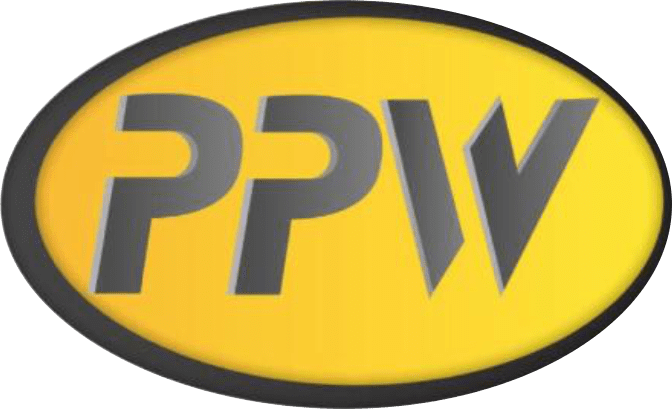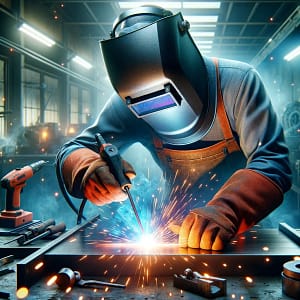Introduction
In the meticulous world of metal fabrication and precision metallurgy, understanding “what electric welding is” is essential for any professional or hobbyist in the sector. Through this article, we are going to immerse ourselves in the universe of this type of welding, we will discover its types, advantages, challenges and how this technique can elevate your projects to the next level.
Definition and Fundamentals of Electric Welding
Electric welding is a term that encompasses several methods used to join materials, primarily metals, through the application of heat generated by an electric current. This process is essential in the manufacturing and metallurgy industry, where precision and durability are sought in the joining of components.
What is Electric Welding?
This particular type of welding involves fusing metal parts by heating them to high temperatures, with or without the addition of a filler material. The heat source is typically an electrical current, which can be direct or alternating, depending on the method and the material to be welded.
Basic principles
In each variant of electric welding, electric current plays a fundamental role, generating the heat essential to melt and join metals. Factors such as the intensity of the current, the time during which the heat is applied and the pressure exerted on the materials are decisive in achieving a high quality weld.
Precision in the handling of these elements not only influences the strength of the joint, but also defines the integrity and durability of the final weld.
When approaching the concept of electric welding, it is essential to understand these fundamentals in order to select the most appropriate method and achieve high-quality joints.
Types of Electric Welding and Their Characteristics
Electric welding comprises several methods, each with unique characteristics that make them suitable for different applications. Below, we highlight the most common types of electric welding, their distinctive characteristics and what they are usually used for:
- Electric Arc Welding (SMAW – Shielded Metal Arc Welding)
Characteristics: Commonly known as stick welding or stick welding, it uses a coated electrode that is consumed during the process. It is versatile and can be used in a variety of positions.
Common Uses: Widely used in structural construction, repairs and in conditions where mobility is a key factor.
- MIG Welding (GMAW – Gas Metal Arc Welding)
Characteristics: It uses a consumable wire and a shielding gas to create the weld. It is known for its efficiency and speed.
Common Uses: Preferred in industrial manufacturing and in projects that require high productivity.
- TIG welding (GTAW – Gas Tungsten Arc Welding)
Characteristics: It uses a non-consumable tungsten electrode and an inert gas as a shield. It stands out for its high quality and precision welds.
Common Uses: Ideal for working with thin metals or sensitive materials such as stainless steel and aluminum.
- Resistance Welding
Characteristics: It generates heat by passing electric current through the metal pieces to be joined. Does not require input material.
Common Uses: Common in the manufacturing of mass products, such as automobiles and appliances, where numerous repetitive and consistent welding is required.
Each of these welding types has its place in the industry, depending on factors such as base material, material thickness, welding position, and specific project requirements.
Advantages and Disadvantages of Electric Welding
Electric welding is a technique widely used in industry, known for its effectiveness and versatility. However, like any method, it has its pros and cons that should be considered when choosing it for a project. Below, we explore the most significant advantages and disadvantages of electric welding:
Advantages:
- Efficiency and Speed: It allows metals to be joined quickly, which is crucial in projects with tight deadlines.
- Versatility: Able to work with a wide variety of metals and alloys, this weld is suitable for numerous industrial applications.
- Control and Precision: Methods such as TIG welding offer exceptional control, allowing for highly precise welds.
- Union Strength: Joints made by electrical welding are generally very strong and resistant, often exceeding the resistance of the base materials.
- Efectivity cost: In many cases, this can be more economical than other joining methods, especially on large-scale projects.
Disadvantages:
- Need for Specialized Skills: This type of welding requires a high level of skill and experience, which can present a challenge in terms of training and personnel.
- Investment in Equipment: Although cost-effective in the long term, electric welding can require a significant initial investment in equipment and maintenance.
- Limitations in Confined Spaces: Some welding methods may not be suitable for working in confined spaces or in adverse environmental conditions.
- Surface Preparation: Weld quality can be affected by surface contamination, requiring meticulous material preparation before welding.
When considering this type of welding for a project, it is crucial to weigh these advantages and disadvantages in relation to the specific requirements of the project.
Common Applications of Electric Welding
This type of process plays a crucial role in many industrial sectors, thanks to its flexibility and ability to provide strong, long-lasting joints. The applications of electric welding are diverse and range from heavy infrastructure construction to precision component manufacturing. Some of the most common applications include:
Construction and Metal Structures
Electric welding is essential in the construction of buildings, bridges and other steel structures, where the joining of heavy elements and resistance to extreme conditions is required.
Automotive industry
In vehicle manufacturing, this process is used to join chassis, bodies and other metal components, ensuring the safety and durability of vehicles.
Manufacturing of Machinery and Equipment
Electric welding is essential in the manufacturing of heavy machinery and industrial equipment, where the precision and strength of joints are crucial to the performance and life of the equipment.
Aerospace and Defense
In these sectors, it is used to manufacture components that must withstand extreme conditions and meet very rigorous quality and safety standards.
Repair and Maintenance
Electric welding also plays an important role in the repair and maintenance of a wide range of metal products, allowing functionality to be restored and component life extended.
These applications demonstrate the versatility and importance of this process in modern industry. The ability to join metals effectively and lastingly is a valuable competency that drives innovation and development in multiple fields.
Discover Our Expert Electric Welding Services
Are you looking for solutions electric welding that meet the highest demands for quality and precision? In PPW, we have been perfecting the art of welding for more than 20 years, offering personalized services that adapt to your specific needs.
Visit our services page electric welding and discover how we can transform your projects. Take the first step towards realizing your projects with the help of dedicated and highly qualified professionals.



